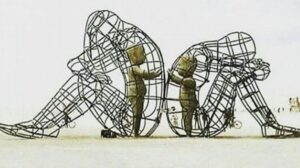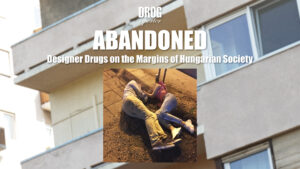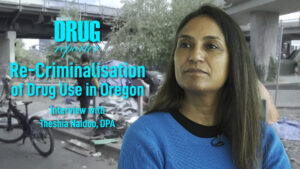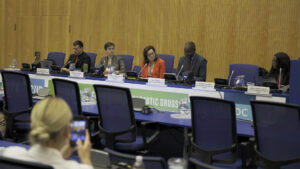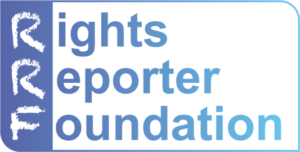Bucharest will host the 4th European Harm Reduction Conference in November 2018. We interviewed Nicoleta Dascalu, a project manager working for the Romanian Anti-AIDS Association (ARAS) about the harm reduction situation in her country.
Drugreporter: In 2013, Drugreporter, in co-operation with the Romanian harm reducers, produced a movie about the crisis of harm reduction in Romania. At that time the situation was dire: there had been a major outbreak of HIV among injecting drug users, and no money for harm reduction programs. Has the situation improved since then?
Nicoleta Dascalu: Yes and no. Yes, because since the crisis in 2013 and the public protests ARAS organised, Bucharest City Hall has been funding one HIV/AIDS and hepatitis prevention project targeting all vulnerable persons, implemented by ARAS, on a yearly basis. No, because this funding does not cover all the needs of the target groups, being limited financially. No, because the Ministry of Health still refuses to fund HIV/AIDS prevention activities implemented by NGOs.
The teaser of our movie from 2013
When we were filming in Bucharest we were appalled by how children and young people live on the street, using the canal system as a shelter in winter. Have their lives changed?
The canal at the North Railway Station, which was the most ”famous”, was closed, and children living there were taken into child protection institutions. But the problem of the homeless in winter is still not solved, as there are not enough places in public shelters. Carusel, another NGO working in harm reduction, organised during the last two winters a private shelter, situated in the city centre.
So HIV prevalence has dropped significantly since 2013. Is this the result of improved coverage and quality of harm reduction programs or something else?
2013 was the year with the highest number of HIV cases among injecting drug users detected, but this means they had become infected before that year, probably during 2010-2012, when the Global Fund grant ended and the new interventions could not cover all the needs (ARAS was the only NGO continuing its harm reduction activities, with structural funds money). The same years saw an explosion in the use of new psychoactive substances, meaning more injections per day, which equals more chances to get infected. And yes, one can say it has dropped since 2013, if we look at the official figures of the National Commission to Fight against AIDS. But also, if you look at the same figures, you can see the percentage in men who have sex with men has increased a lot.
Romania has a national drug strategy that supports harm reduction – but is it implemented?
No, because it does not have a budget. ANA – the Romanian Anti-Drug Agency – had a budget for a Program of National Interest, where they were supposed to fund, by public call, NGOs working in harm reduction. They had launched the call in autumn 2016 and then they cancelled it, as their budget was cut by the new government.
The drug strategy even includes drug consumption rooms. Do you think there is any chance that such facilities can be introduced to your country any time soon?
There is a movement towards a change in the legislation that would favour this – possession should be decriminalised, too. So, I think it should become reality at a certain moment.
I’ve heard one needle and syringe program in the Ferentari district of Bucharest, operated by the NGO Carusel, was closed down. What happened?
The district city hall considered that the container where Carusel held their needle exchange was placed in an unhappy location – near a park. They said they had received complaints from the parents who came with their children to the park and saw syringes on the ground.
Access to this article is free - but to produce articles and videos is not. Drugreporter is a non-profit website that needs your support to provide you with high quality contents.
Romania will be the next president of the EU Council (January-June 2019). Have you discussed plans with the government regarding drug policies during its term? Is there any mechanism to involve civil society in drug policy-making in a meaningful way?
ARAS has supported the idea that Romania makes something like the Dublin Declaration, but on hepatitis eradication, during its EU Council Presidency. The Government has involved the civil society in a public consultation on the themes of interest during the EU presidency, and ARAS was a part of this. The final decisions have not been taken yet.
In many countries of our region civil society is attacked and scapegoated. Do you see this trend in Romania too?
Yes, there is this trend of saying that NGOs paid by Soros are ruining the country, that they are damaging the image of Romania, etc.
Do you think the fact that the next European Harm Reduction Conference will take place in Bucharest can contribute to changing the public discourse about harm reduction in Romania?
There is a strong chance for this and we plan to use this conference as an advocacy opportunity. Also, at the end of January 2019, Bucharest will host the HIV/hepatitis C Conference, organised by HIV in Europe. This will be another good chance for changing the public discourse on harm reduction and on HIV/AIDS and Hepatitis prevention in general.
An interview by Peter Sarosi

